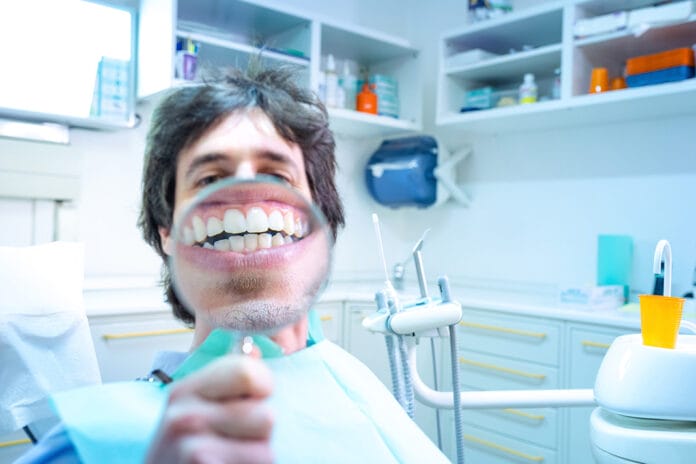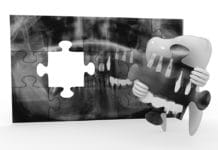Let’s break up the monotony of dental hygienists’ timed appointments, scientific data, patient education, and continuing education by exploring the world of amazing dental facts. This article will embark on a world outside the dental office while keeping the oral cavity in focus.
1) Most Teeth
The average human has 32 teeth by adulthood. However, on September 20, 2014, Guinness World Records recorded a male from Bangalore, India, with 37 teeth. Vijay Kumar V.A still holds this record to date.1
What animal has the most teeth, you may ask? The great white shark is what may first come to mind. Even though a great white shark has 24 teeth in its main jaw, it also has five rows of developing teeth designed to replace any lost teeth. This averages out to roughly 300 teeth in the lifetime of a shark.2
Although the shark seems to have an abundance of teeth, the snail has the most teeth of any living animal, with an average of 12,000 to 20,000 thousand teeth. Depending on the species, the snail has 120 rows of teeth called a radula.3 The radula is “an anatomical structure used by mollusk for feeding, sometimes compared to a tongue.”4 The radula is composed of “a minutely toothed, chitinous ribbon” that is used to scrape and cut the vegetation that the snail feeds on.4
2) No Teeth
I know this may seem like an easy question. What mammal has no teeth? The common answer is the edentulous human, but the answer is not that simple. Besides the edentulous human, the mammals that qualify under the “no teeth” category are anteaters, platypuses, and some species of whales.5
Understandably, the anteaters and platypus may not need teeth, but what about a whale? Who would have thought? A giant anteater, native to Central and South America, consumes mostly ants and termites using their two-foot-long sticky tongue, which can flick in and out of the mouth up to 150 times a minute.6
In contrast, the platypus, native to Australia, has “horny grinding plates and ridges on the upper and lower jaws” that allow the platypus to chew its food.7 The platypus typically eats small water animals such as insect larvae, shrimp, and crayfish. While underwater, the platypus stores its food in its cheek and then surfaces where it enjoys its meal.7
One species of edentulous whales is the baleen whale. Understandably, they are named for their baleen, “a filter-feeding system” inside their mouths.8 Located in the upper jaw, the baleen is like bristles, and when the whale takes in water, the baleen filters the food such as krill for the whale to feast on.8
3) Bite Force
The standard bite force of a human is 160 pounds of pressure per square inch (psi). This sounds like a strong bite to me, especially knowing I don’t want my fingers to be someone’s midday snack at the dental office.
The hippopotamus has “the strongest bite force of any living mammal” ─ a strong 1,825 psi.9 However, the Nile crocodile, a reptile that is native to Africa, wins with a bite force of 5,000 psi. Registering in at close second is the saltwater crocodile at 3,090 psi.9 In addition, the saltwater crocodile has the strongest bite ever tested by a team from National Geographic and is considered the largest of the crocodiles.9
Interestingly, the crocodile is the only non-mammal vertebrae with dental anatomy that includes “tooth sockets,” similar to humans.10 In addition, for each tooth a crocodile loses, it can be replaced up to 50 times, which is characterized in the dental world as a polyphyodont.10
4) Strongest Muscle in the Body
In the dental world, some would say the tongue is the strongest muscle in the body, while others would say it is the masseter (jaw). This is a highly debated question because muscles do not act alone; therefore, it is difficult to determine their individual strength.
The three most common answers would be the tongue, the masseter, and the gluteus maximus. Deciphering between the three, the gluteus maximus takes a win for the largest muscle, whereas the masseter muscle comes in first for the strongest muscle due to its force of pressure.11
So, you ask, what about the tongue? The tongue is a versatile and fast muscle, but it’s not the largest or strongest; however, it is the hardest muscle to control. Just ask a dental hygienist.
5) Oldest Human Teeth Found
In Europe, archeologists have found the remains of a molar tooth that dates to between 44,000 to 46,000 years ago.12 The time frame concludes the “earliest arrival of Homo sapiens in Europe, and show they somehow shared the land for thousands of years with the heavily-built Neanderthals.”12
Tooth finds, such as the molar discovered in Europe, unlock many unanswered questions about our primate history. Some examples of information are natural exposures, diet, seasonal migration, and age of death, to name a few.13
Although dental clinicians are exposed daily to scientific dental knowledge and individual dental cases, there is a world of dental facts that we have yet to unearth, whether it may be humanistic or animalistic in nature. But for now, we must hold steady on our largest muscle and use our most versatile muscle to keep on educating our patients.
Need CE? Click Here to Check Out the Self-Study CE Courses from Today’s RDH!
Listen to the Today’s RDH Dental Hygiene Podcast Below:
References
- Most Teeth in The Mouth. (n.d.) Guinness Book of World Records. Retrieved from https://www.guinnessworldrecords.com/world-records/most-teeth-in-a-mouth
- Sharks: How Many Teeth Does a White Shark Have? (2019, October 30). Passport Ocean. Retrieved from www.passportocean.com/2019/10/30/how-many-teeth-white-shark-have/
- Stanisic, J. (n.d.) Do Snails Have Teeth? Facts about Snails. Retrieved from https://factsaboutsnails.com/snail-facts/do-snails-have-teeth/
- Radula. (n.d.) Wikipedia. Retrieved from www.en.wikipedia.org/wiki/radula
- Mammal Teeth. (n.d.). National Park Service. Retrieved from https://www.nps.gov/articles/000/mammal-teeth.htm
- Giant Anteater. (n.d.) Smithsonian National Zoo and Conservation Biology Institute. Retrieved from https://nationalzoo.si.edu/animals/giant-anteater
- Platypus. (n.d.). The State of Queensland Department of Environment and Science. Retrieved from https://environment.des.qld.gov.au/wildlife/animals/a-z/platypus
- Baleen. (n.d.) Wikipedia. Retrieved from www.en.wikipedia.org/wiki/baleen
- The 10 Most Powerful Animal Bites. (n.d.) The Mysterious World. Retrieved from https://themysteriousworld.com/most-powerful-animal-bites/
- Polyphyodont. (n.d.) Wikipedia. Retrieved from www.en.wikipedia.com/wiki/polyphyodont
- What is the Strongest Muscle in the Human Body? (November 19,2019). Science Reference Section, Library of Congress. Retrieved from https://www.loc.gov/everyday-mysteries/item/what-is-the-strongest-muscle-in-the-human-body/
- Metcalfe, T. (2020, May 11.) A Tooth Offers Evidence Modern Humans Reached Europe Earlier than Previously Thought. NBC Science News. Retrieved from https://www.nbcnews.com/science/science-news/tooth-offers-evidence-modern-humans-reached-europe-earlier-previously-thought-n1204401
- Hublin, J., Sirakov, N., Tsanova, T., et al. Initial Upper Paleolithic Homosapiens from Bacho Kiro Cave, Bulgaria. Nature. 2020; 581: 299-302. Retrieved from https://www.nature.com/articles/s41586-020-2259-z














